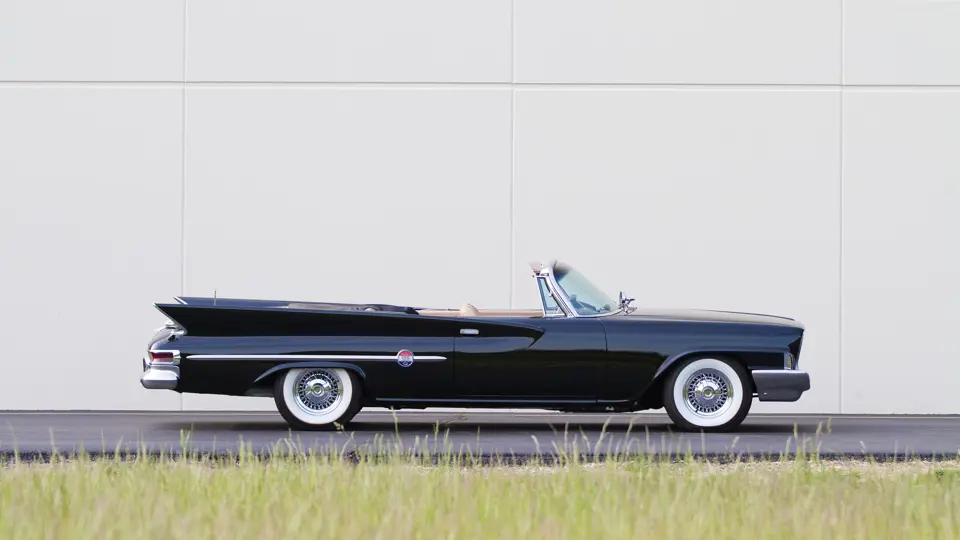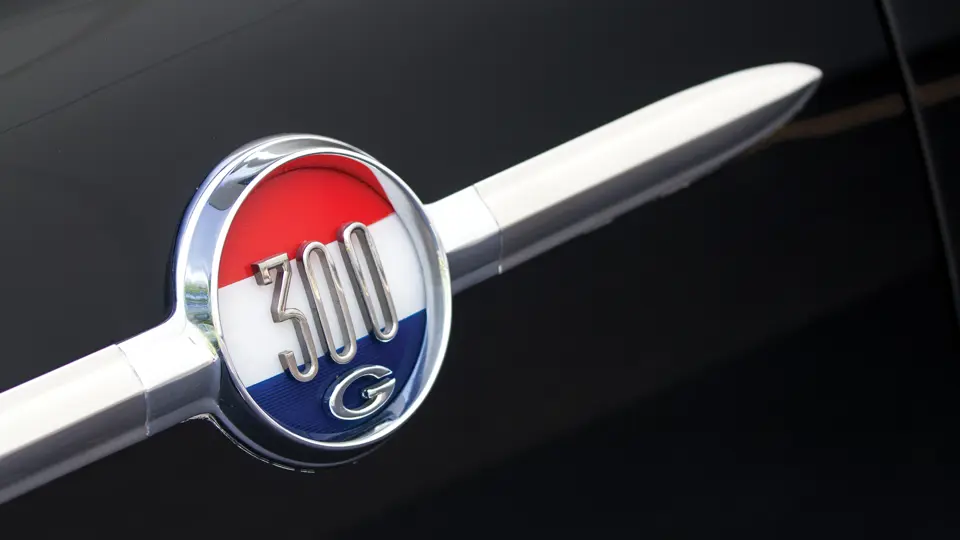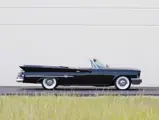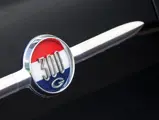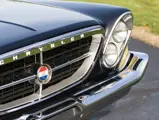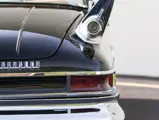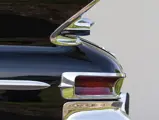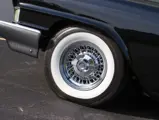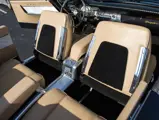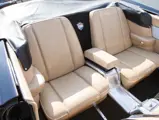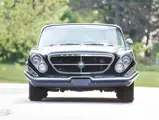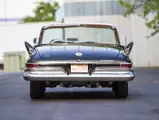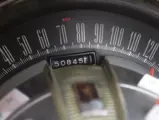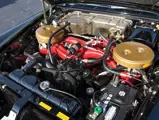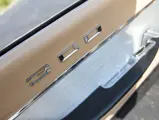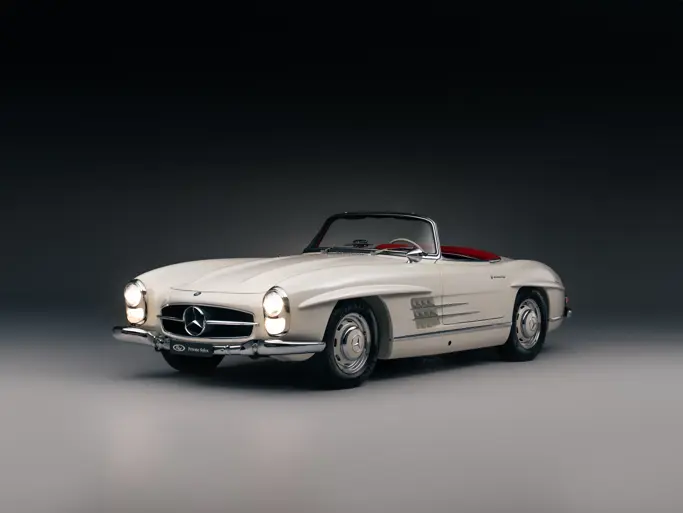375 bhp, 413 cu. in. overhead-valve V-8 engine, three-speed Torqueflite automatic transmission, torsion bar independent front suspension, live rear axle with semi-elliptic leaf springs, and four-wheel power-assisted drum brakes. Wheelbase: 126 in.
Chrysler’s new C-300 created a sensation in 1955. It was based on the New Yorker Hardtop Coupe, and it had the front sheet metal and grille from the Imperial and the most powerful engine in the company catalogue, a 331-cubic inch Hemi V-8 with dual four-barrel carburetors, a racing cam, and solid lifters. At 300 brake horsepower, from which it took its name, it was the most powerful American passenger car engine. For 1956, a new 300B model began the “letter series,” which would continue for a decade.
A convertible was added with the 300C in 1957, and it featured a full leather interior and the new corporate styling. This year marked the debut of the round tri-color 300 emblem, which was prominently emblazoned on the rear quarter panel. The Hemi engine now displaced 392 cubic inches and developed 375 horsepower, or 390 with the optional dual-quad carburetion.
The letter series progressed alphabetically, with the 300D for 1958 experimenting (unsuccessfully) with fuel injection and the 1959 300E switching to a 413-cubic inch wedge engine. In 1960 the 300F introduced ram induction, and when paired with solid lifters and the long-ram manifold, its horsepower soared to 400. The wedge engine was continued for 1961 with the 300G, and the front end was restyled, as the grille was reshaped and the headlights were mounted in a slanted formation. A three-speed manual gearbox was made available for racing applications.
This 1961 300G Convertible has the 375-brake horsepower version of the dual-carb ram 413 induction wedge. The transmission is Chrysler’s bulletproof pushbutton Torqueflite automatic. It is elegant in black with beige leather seats, and it has the iconic jet-like dashboard instrumentation and ultra-luxurious power swivel front seats. Accessories and amenities on the car include power windows, power steering, power brakes, a 150-mph speedometer, a Golden Touch AM radio with a power antenna, air conditioning, and a tan cloth power top. It runs on Coker Classic P35/75R15 wide whitewall radials, which are mounted to Kelsey Hayes chrome wire wheels.
The “G” edition of the 300 Series is considered by many to be the last of the great letter series cars. From 1962 the 300H and its successors shared a platform with the cheaper 300 Sport series, based on the Windsor, which siphoned off many of the letter series’ customers. Gone, too, were the fins of the ’50s and early ’60s, as they were blunted in the corporate purging of Exner influence. This has helped solidify the 300G’s status as one of the most collectible cars of the 1960s. These special cars have continued to appreciate in both value and enthusiasm, as they are distinctive to look at and fun to drive.
This car is one of just three hundred thirty-seven 300G convertibles, and one of even fewer still with factory air, of which reportedly some twenty survive. It has been the recipient of a rotisserie restoration by Greg Groom, of Highland, California. Its cross-ram engine was rebuilt by J.C. Auto Restoration in Seattle, and its top and interior were made by Gary Goers, of Kaspell, Montana. Other options and features on the car include a console-mounted tachometer, tinted glass in all windows, remote-control mirrors, a full-length console, and a two-spoke steering wheel with rim-mounted horn buttons.
This Chrysler 300G, the last of the finned letter series cars, was a double winner at the 2006 Indianapolis Concours Grand Prix show, the only double winner at the event. It is still entirely competitive, and its leather is supple and showing only the slightest use. The paint exhibits a deep shine, and its detailing is excellent throughout. The cross-ram Chryslers ranked with the most powerful American cars of their generation, and they surpassed all the rest in sheer audacity. This car, one of the finest 300G Chryslers available on the market, is surely a shining example.





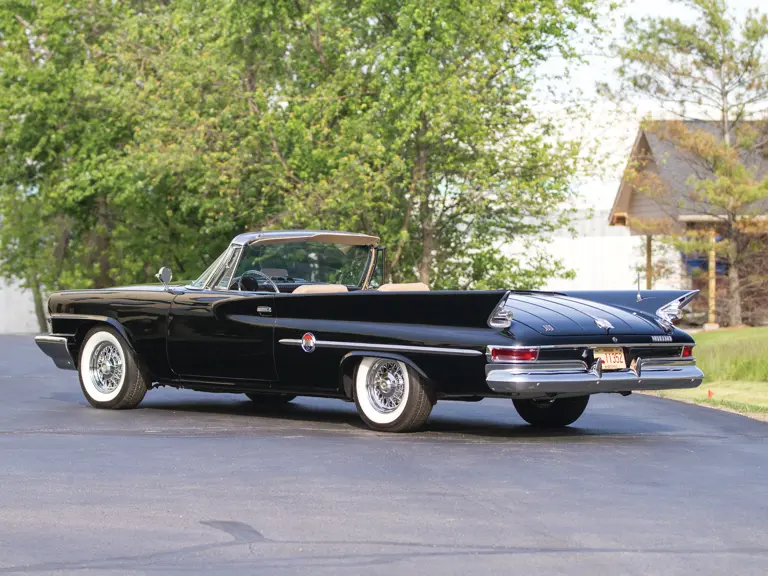
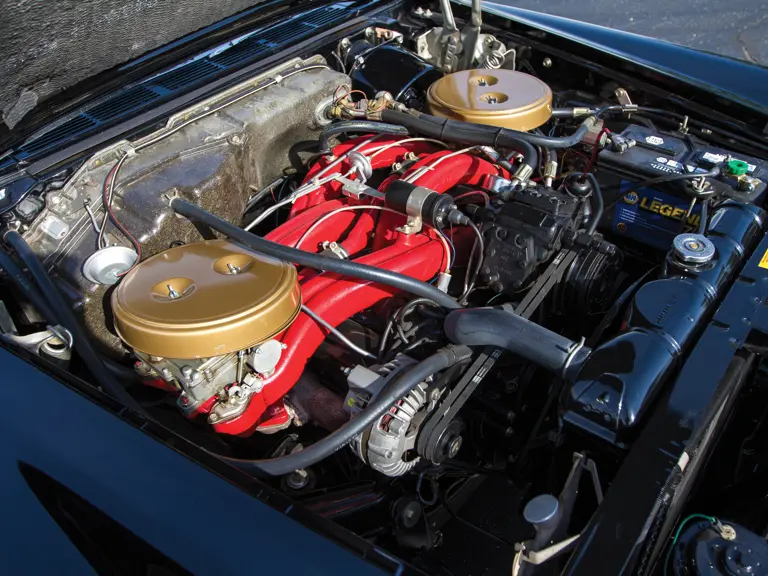

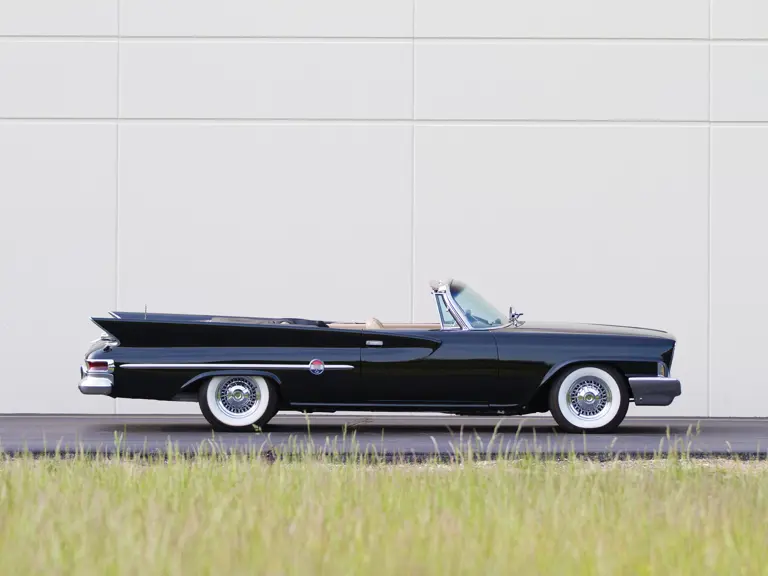
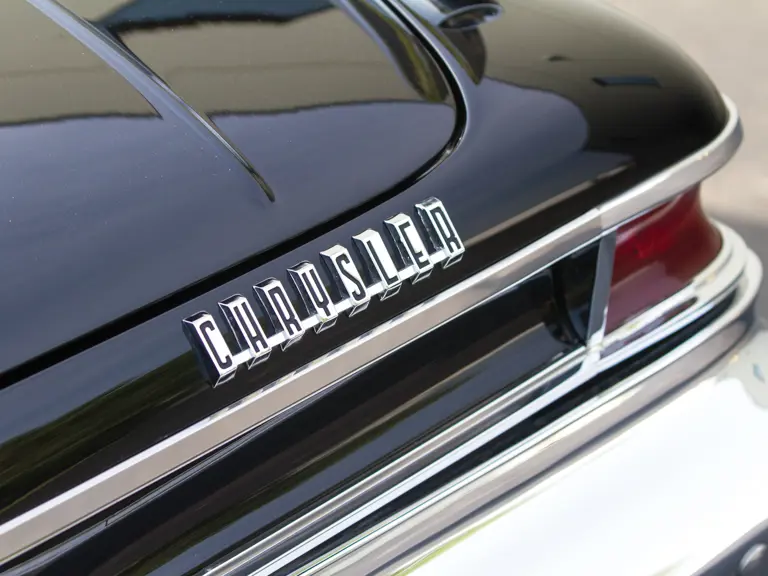
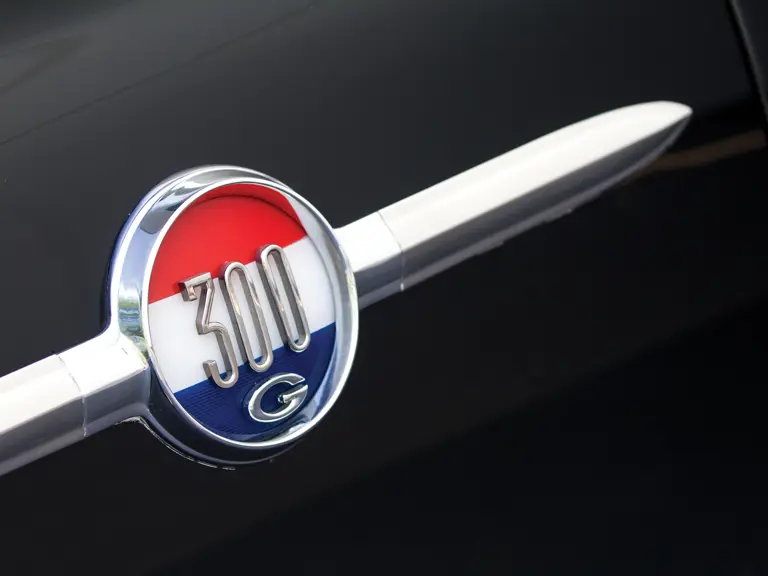
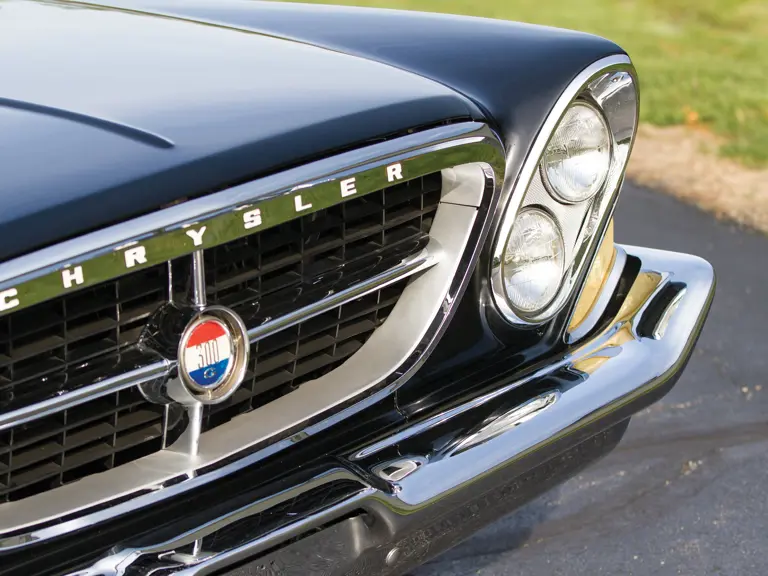
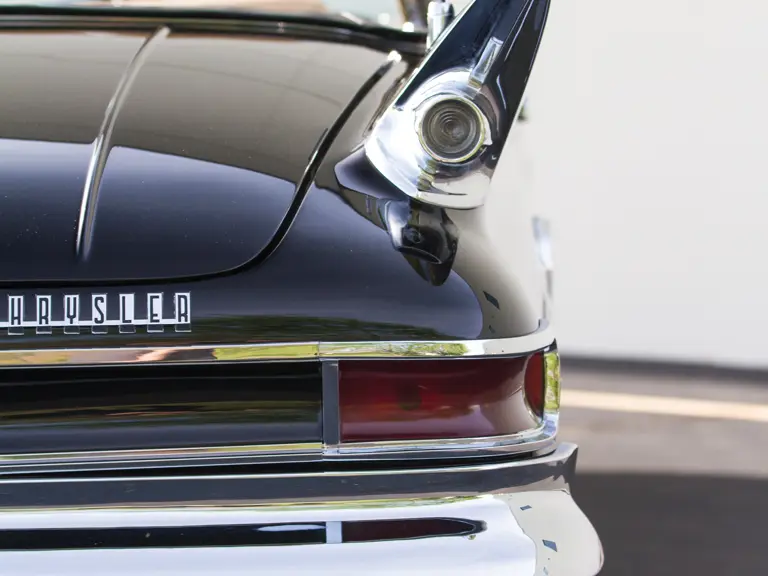

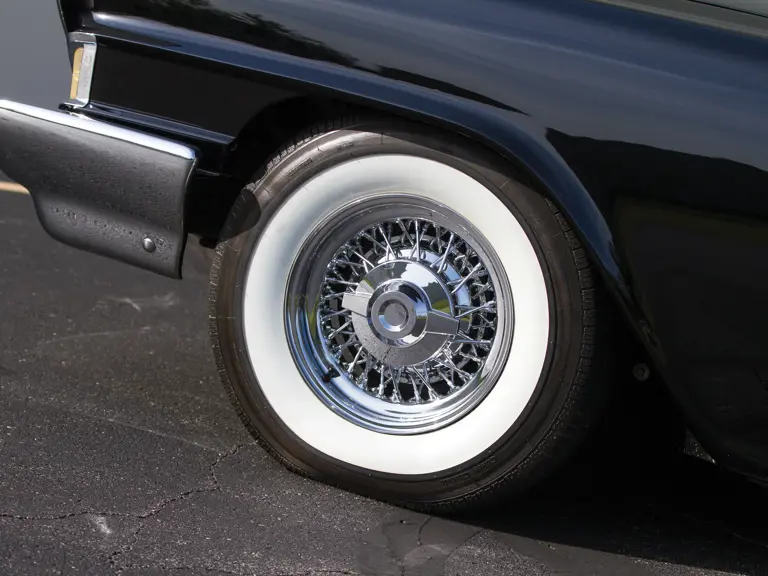
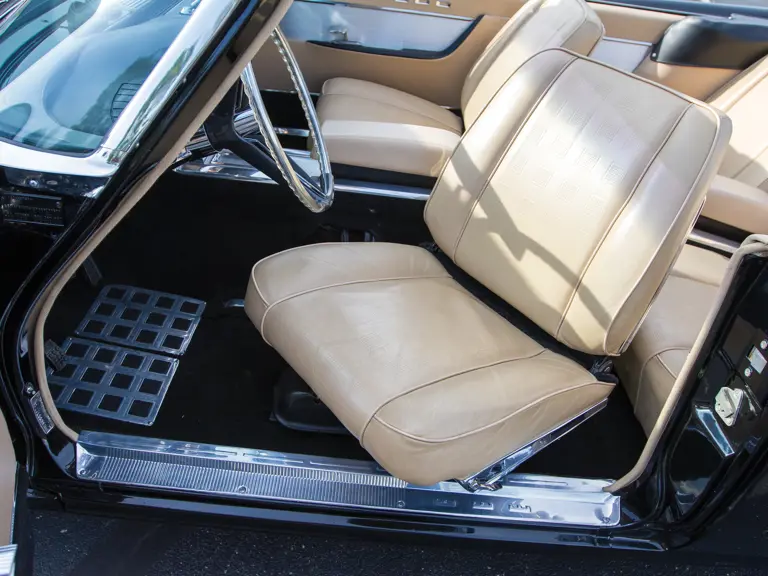

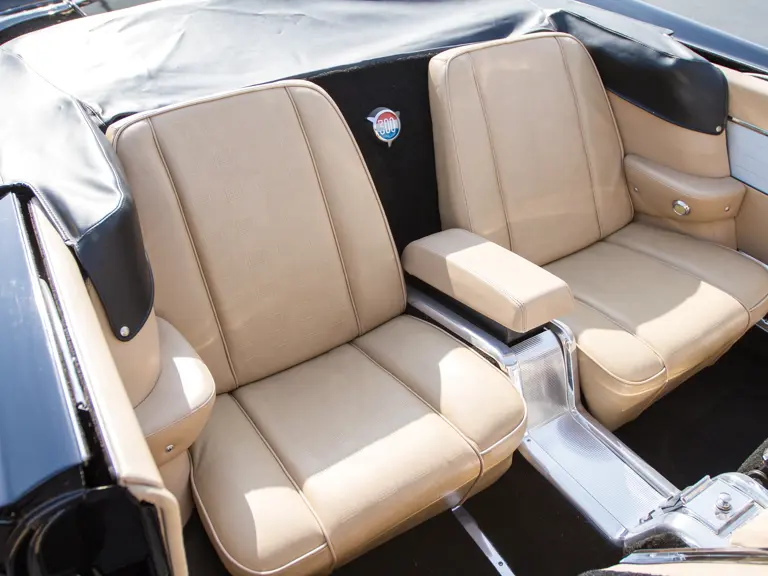
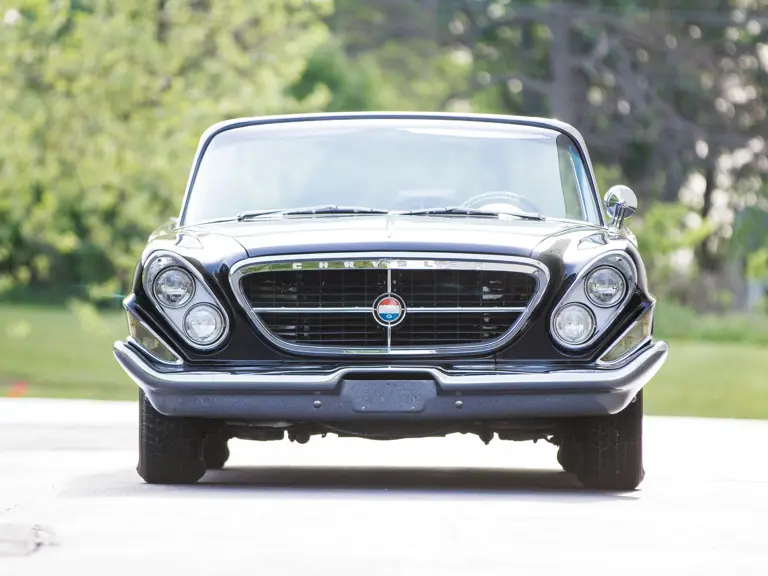
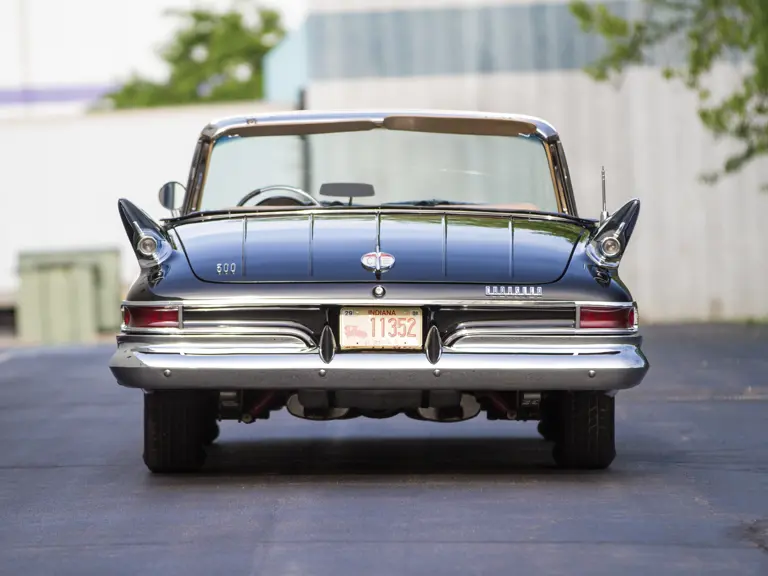
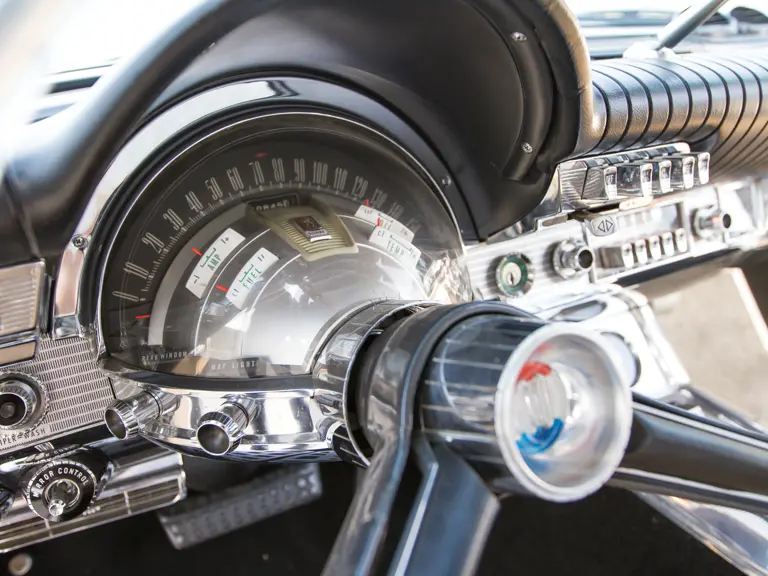
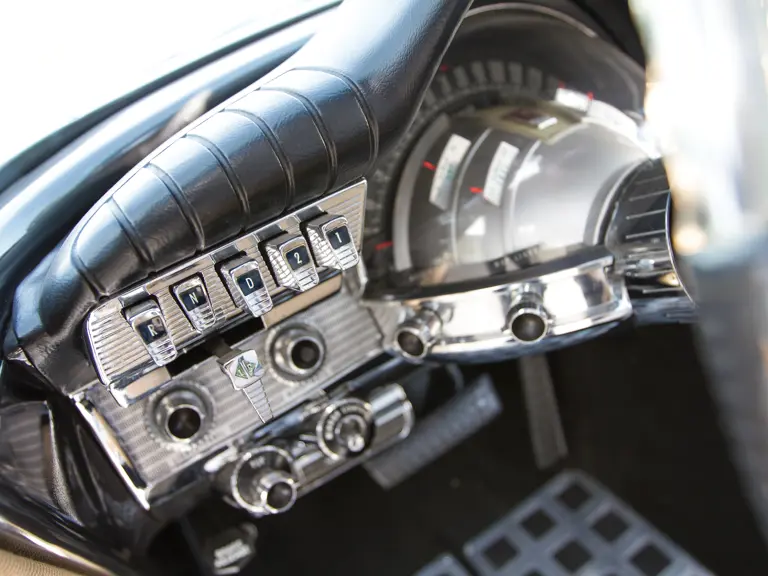

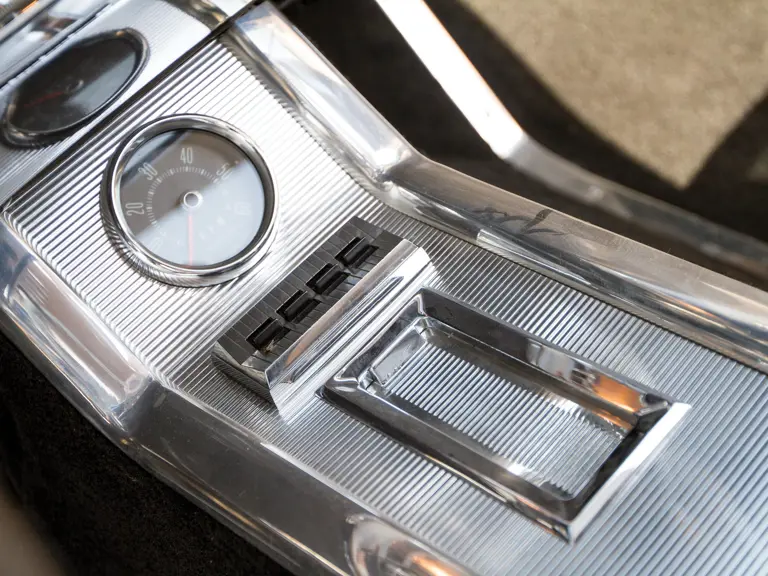

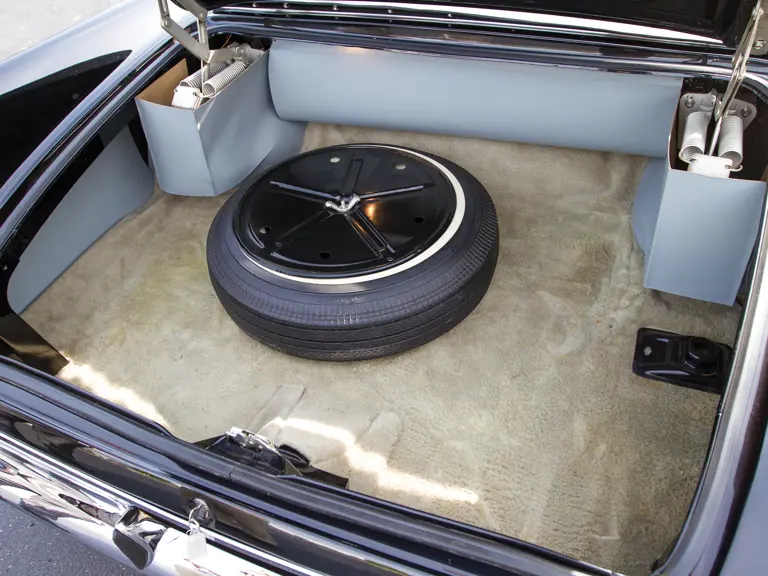
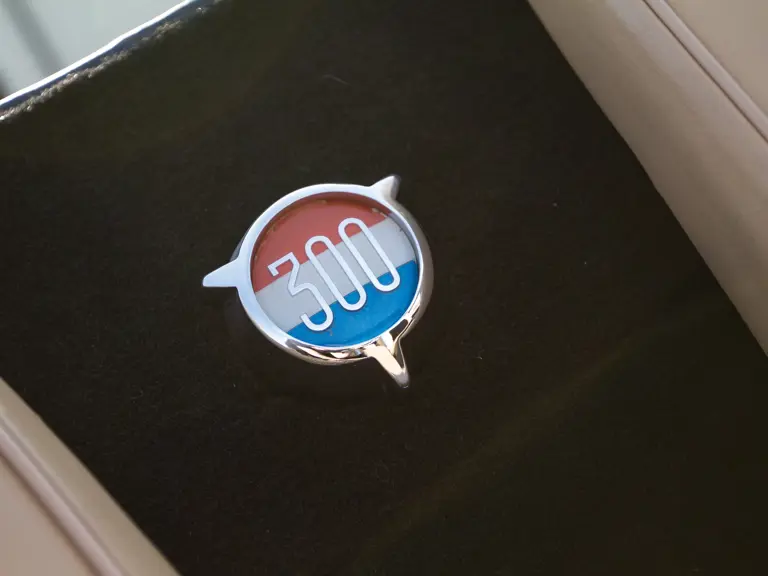
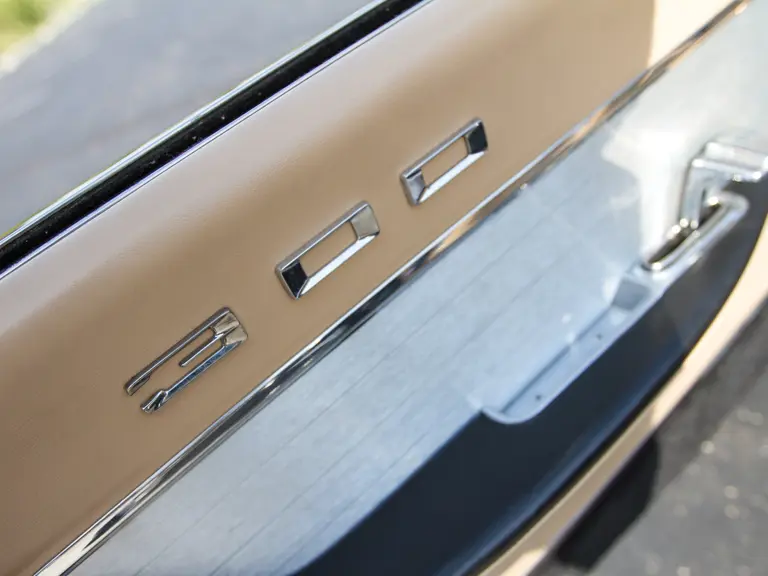
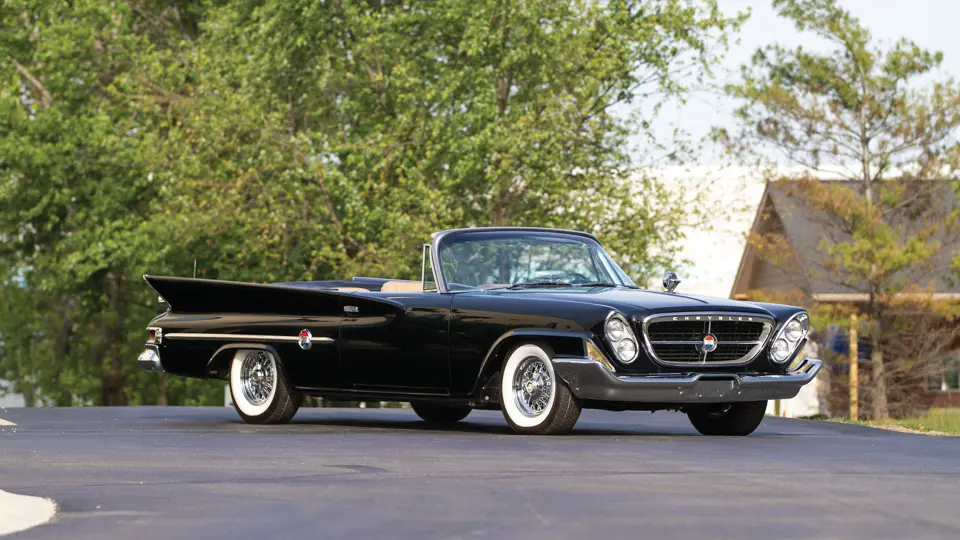
 | Plymouth, Michigan
| Plymouth, Michigan
